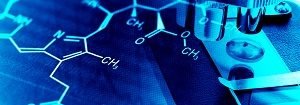 Project topics on biochemistry involve the biological and physicochemical procedures that transpire in active organisms. Biochemistry refers to the discipline and study of vital sequences and biochemical elements occurring inside living things, including hormones, lipids, proteins, minerals, carbohydrates, among others. Biochemistry helps us to understand why and how certain phenomena exists. It provides practical solutions to biological problems and anomalies, such as diseases and deformities. It leads to inventions and discoveries such as vaccines and cures.
Project topics on biochemistry involve the biological and physicochemical procedures that transpire in active organisms. Biochemistry refers to the discipline and study of vital sequences and biochemical elements occurring inside living things, including hormones, lipids, proteins, minerals, carbohydrates, among others. Biochemistry helps us to understand why and how certain phenomena exists. It provides practical solutions to biological problems and anomalies, such as diseases and deformities. It leads to inventions and discoveries such as vaccines and cures.
Biochemistry Project Topics:
- CO2 and photosynthesis. The purpose of this project is to illustrate that carbon dioxide is an essential requirement in photosynthesis. Plants utilize sunlight and carbon dioxide in the atmosphere to yield food for themselves. If either is absent, then the process of photosynthesis is adversely affected. The food produced by the plants is starch, which one can prove by using an iodine solution that should turn black when exposed to starch. One requires the following in this project: a candle, two potted plants, bell jars, petroleum jelly, glass sheets, and an iodine solution. It should take about fifteen minutes to set up the apparatus and 10 hours to note any observations. One should then take the two potted plants, which should be young and should have been in the dark to guarantee the absence of starch in them. Apply petroleum jelly on two glass sheets before placing the potted plants on them. On one of the glass sheets, put a burning candle and in the other sheet place a dish with caustic soda. Cover them with bell jars and leave them intact for some hours before testing the leaves for starch. One plant should have starch unlike the other. The essence of placing a candle is that it uses up oxygen and caustic soda absorbs carbon dioxide.
- Determining different sizes of molecules. The aim of the project is to compare the size of particles in two types of food coloring dye. The goal is to demonstrate which color particles are the largest and smallest. Further, it will show that the two varieties do not use the same combination of color molecules to yield their dye. It involves making an electrophoresis chamber, preferably using a steel wire, wire cutters, wooden sticks for making a comb, and a plastic box. To make the agarose gel, one needs measuring cups and spoons, a butter knife, bottled water, agar powder, baking soda, bowl, and a microwave. Additionally, two different brands of dye, a ruler, a plastic syringe, alligator clips and nine volts batteries. The procedure involves making an agarose gel then using the comb to place it in the chamber for it to harden leaving holes for the dye. Then one needs to connect five of the batteries using steel wire at the top and alligator clips at the bottom of the box. The connection should provide necessary electric current for the transfer and separation of the dye. For it to function, the positive electrode should be adjacent to the dye wells. One should then put three distinct colors from the two types of the dye in the holes. Importantly, one should monitor the process after every 15 minutes. Electrophoresis helps to identify the color of molecules of the different dyes. Also, the smallest particle should travel furthest and vice-versa.
Keep in mind, AffordablePapers.com provides cheap assignment help for students around the world. Also, you can contact us with do my essay cheap requests and get instant expert assistance.
References:
Davies, P. (. (2013). Plant hormones: physiology, biochemistry, and molecular biology. Springer Science & Business Media.
Loertscher, J. G. (2014). Identification of threshold concepts for biochemistry. CBE-Life Sciences Education, 13(3), 516-528.
Miflin, B. J. (2014). Amino acids and derivatives: The biochemistry of plants. Elsevier.
Robinson, J. K. (2013). Project-based learning: Improving student engagement and performance in the laboratory. Analytical and Bioanalytical Chemistry, 405(1), 7-13.
Stumpf, P. K. (2014). Lipids: structure and function: The biochemistry of plants (Vol. 4). Elsevier.